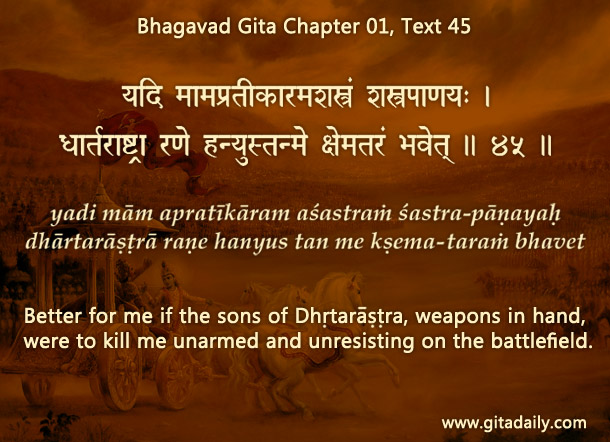Some people think that being saintly is impractical in the real world. But the Bhagavad-gita reveals a pragmatic standard of saintliness.
At the Gita’s start (01.45), Arjuna wanted to adopt what he thought was the saintly standard: nonviolence even in the face of murderous aggression.
Given that we live amidst increasing inundation by news of global violence, we may find Arjuna’s stand appealing. In fact, Arjuna’s side had, before the war, explored and exhausted all avenues for a reasonable nonviolent resolution. But their opponents had remained unremittingly malevolent.
For protectors of an invaded state, staying nonviolent with such ruthless aggressors is worse that suicidal. Why? Because the aggressors would destroy not just the protectors but also the general population. For example, if the world had been nonviolent with the Nazis, their concentration camps wouldn’t have remained concentrated around Germany alone, but would have been replicated globally.
Reflecting such hard-eyed realism, the Gita rejects unconditional pacifism as the standard of saintliness. Its standard is harmonization of the human will with the divine will (18.73). Since God is everyone’s benefactor and is the wisest of all, doing his will is the best course of action. While his will is not always clear, the first step towards knowing it is clear enough: striving to connect ourselves with him, as Arjuna did by turning to Krishna for guidance and as we can do by turning to Krishna’s words.
How we do his will will vary according to our social position, as the Gita indicates in its class-based character analysis (18.42-44). While nonviolence is a laudable quality, it befits the educator class more than the warrior class, who need to fearlessly counter violence with violence.
By equipping ourselves with Gita wisdom, we all can learn how in our specific situations to be both saintly and sensible.
Explanation of article:
Podcast:


Leave A Comment